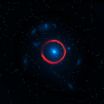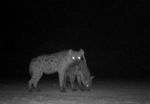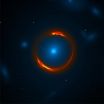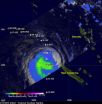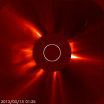(Press-News.org) NEW YORK, MARCH 13, 2013 – Researchers have discovered a unique monoclonal antibody that can effectively reach inside a cancer cell, a key goal for these important anticancer agents, since most proteins that cause cancer or are associated with cancer are buried inside cancer cells. Scientists from Memorial Sloan-Kettering Cancer Center and Eureka Therapeutics have collaborated to create the new human monoclonal antibody, which targets a protein associated with many types of cancer and is of great interest to cancer researchers.
Unlike other human therapeutic monoclonal antibodies, which can target only proteins that remain on the outside of cancer cells, the new monoclonal antibody, called ESK1, targets a protein that resides on the inside of the cell.
ESK1 is directed at a protein called WT1, which is overexpressed in a range of leukemias and other cancers including myeloma and breast, ovarian, and colorectal cancers. WT1 is a high priority target for cancer drugs because it is an oncogenic protein, meaning that it supports the formation of cancer. In addition, it is found in few healthy cells, so there are less likely to be side effects from drugs that target it.
"This is a new approach for attacking WT1, an important cancer target, with an antibody therapy. This is something that was previously not possible," said David A. Scheinberg, MD, PhD, Chair of the Sloan-Kettering Institute's Molecular Pharmacology and Chemistry Program and an inventor of the antibody. "There has not been a way to make small molecule drugs that can inhibit WT1 function. Our research shows that you can use a monoclonal antibody to recognize a cancer-associated protein inside a cell, and it will destroy the cell."
The first studies of the antibody are showing promise in preclinical research as a treatment for leukemia as reported March 13, 2013, in Science Translational Medicine.
"ESK1 represents a paradigm change for the field of human monoclonal antibody therapeutics," said Cheng Liu, PhD, President and Chief Executive Officer of Eureka Therapeutics. "This research suggests that human antibody therapy is no longer limited to targeting proteins present outside cancer cells, but can now target proteins within the cancer cell itself."
ESK1 was engineered to mimic the functions of a T cell receptor, a key component of the immune system. T cells have a receptor system that is designed to recognize proteins that are inside the cell. As proteins inside the cell get broken down as part of regular cellular processes, molecules known as HLA molecules carry fragments of those proteins — known as peptides — to the surface. When T cells recognize certain peptides as abnormal, the T cell kills the diseased cell.
In the current study, the investigators showed that ESK1 alone was able to recognize WT1 peptides and kill cancer cells in the test tube and also in mouse models for two different types of human leukemia. "We were surprised that the antibody worked so well on its own," said Dr. Scheinberg, senior author of the paper. "We had originally expected that we might need to use the antibody as a carrier to deliver a drug or a radioactive therapy to kill the cancer cells, but this was not necessary."
Additional studies must be done in the laboratory before ESK1 is ready to be tested in patients. But the monoclonal antibody was engineered to be fully human, which should speed the time it takes to move the drug into the clinic. Researchers expect that the first clinical trials, for leukemia, could begin in about a year.
The antibody was developed under a collaborative effort between Memorial Sloan-Kettering and Eureka, which have jointly filed for patent protection.
###
This work was supported by grants from the Leukemia and Lymphoma Society, the National Cancer Institute, the Sloan-Kettering Institute's Experimental Therapeutics Center and Technology Development Fund, the Commonwealth Foundation for Cancer Research, the Tudor and Glades Foundations, the Merker Fund, the Lymphoma Foundation, and the Mesothelioma Applied Research Foundation.
About Memorial Sloan-Kettering Cancer Center
Memorial Sloan-Kettering Cancer Center is the world's oldest and largest private institution devoted to prevention, patient care, research, and education in cancer. Our scientists and clinicians generate innovative approaches to better understand, diagnose, and treat cancer. Our specialists are leaders in biomedical research and in translating the latest research to advance the standard of cancer care worldwide. For more information, go to http://www.mskcc.org.
About Eureka Therapeutics
Eureka Therapeutics is a privately held biotechnology company located in the San Francisco Bay Area, focused on the discovery of fully-human antibody drugs for the treatment of cancer. Utilizing its antibody drug discovery and engineering technologies, Eureka is advancing safe and effective therapies for targeting previously inaccessible cancer antigens. The company has built an early stage pipeline of innovative drugs, with the most advanced candidate at pre-clinical stage in collaboration with Memorial Sloan-Kettering Cancer Center. For more information about Eureka Therapeutics, please visit: http://www.eurekainc.com.
When a batch of bright cosmic objects first appeared in maps in 2008 made with data from the South Pole Telescope, astronomers at the University of Chicago's Kavli Institute for Cosmological Physics regarded it only as an unavoidable nuisance.
The light sources interfered with efforts to measure more precisely the cosmic microwave background—the afterglow of the big bang. But the astronomers soon realized that they had made a rare find in South Pole Telescope's large survey of the sky. The spectra of some of the bright objects, which is the rainbow of light they emit, ...
In the southern Rift Valley of Kenya, the Maasai people, their livestock and a range of carnivores, including striped hyenas, spotted hyenas, lions and bat-eared foxes, are coexisting fairly happily according to a team of coupled human and natural systems researchers.
"I wouldn't call the results surprising," said Meredith Evans Wagner, a visiting scholar from the University of Florida in the Center for Systems Integration and Sustainability (CSIS) at Michigan State University and part of the research team. "Other research has shown that people and carnivores can coexist, ...
PASADENA, Calif.—Galaxies have been experiencing vigorous bursts of star formation from much earlier in cosmic history than previously thought, according to new observations by a Caltech-led team.
These so-called starburst galaxies produce stars at a prodigious rate—creating the equivalent of a thousand new suns per year. Now the astronomers have found starbursts that were churning out stars when the universe was just a billion years old. Previously, astronomers didn't know whether galaxies could form stars at such high rates so early in time.
The discovery enables ...
Colonoscopy is one of the most effective cancer screening procedures available. Colon cancer grows very slowly and can be treated if caught early through screening. But, perhaps because of this success, older Americans are undergoing screening colonoscopies despite recommendations against screening in adults aged 76 and older.
A new study by researchers at the University of Texas Medical Branch at Galveston published online today in JAMA Internal Medicine shows that one out of four colonoscopies paid for by Medicare is potentially inappropriate under current screening ...
MADISON, Wis., March 13, 2013 – Even after researchers studying White Nose Syndrome (WNS) established that a fungus called Geomyces destructans is at the heart of the devastating disease, detecting it depended largely on finding dead or dying bats.
This month, the journal Mycologia will publish research by a team of U.S. Forest Service scientists and partners identifying additional species of Geomyces and describing development of a highly sensitive DNA-based technique for early identification of Geomyces destructans on bats as well as in soils and on cave walls.
"The ...
CHAMPAIGN, Ill. — A little-noticed provision of the Affordable Care Act requires all chain restaurants and retail food establishments with 20 or more locations to list calorie counts on their menus. But according to research co-written by a University of Illinois agricultural economist, numeric calorie labels might not be the most effective way to influence patrons to select "healthier" (often interpreted as lower-calorie) items.
Brenna Ellison, a professor of agricultural and consumer economics, says placing a symbolic label in addition to the numeric calorie information ...
NASA's Tropical Rainfall Measuring Mission satellite, also known as TRMM, flew over Cyclone Sandra twice in one day and noticed a large decrease in rainfall intensity over a nine hour period.
On March 11, 2013, NASA's TRMM satellite twice flew above weakening tropical cyclone Sandra as it was passing to the west of New Caledonia in the southern Pacific Ocean. TRMM's Precipitation Radar (PR) had a very good view of Sandra as it passed directly above the tropical cyclone on March 11 at 1312 UTC (9:12 a.m. EST). TRMM PR measured rainfall at the extreme rate of over 206 mm ...
ATHENS, Ohio (March 13, 2013)—Dwelling on negative events can increase levels of inflammation in the body, a new Ohio University study finds.
Researchers discovered that when study participants were asked to ruminate on a stressful incident, their levels of C-reactive protein, a marker of tissue inflammation, rose. The study is the first time to directly measure this effect in the body.
"Much of the past work has looked at this in non-experimental designs. Researchers have asked people to report their tendency to ruminate, and then looked to see if it connected to physiological ...
March 12, 2013 — Albuquerque, NM (UNM Cancer Center) — It's the spread of the original cancer tumor that kills most people. That's why cancer researchers vigorously search for drugs that can prevent metastases, the spread of cancer. The research team co-led by Angela Wandinger-Ness, PhD, and Larry Sklar, PhD, at the University of New Mexico Cancer Center has found a chemical compound that appears to control cell migration and adhesion, two important characteristics of metastatic cancer cells. The team recently published a paper describing how the first-in-class compound ...
The sun recently erupted with two coronal mass ejections (CMEs). One began at 8:36 p.m. EDT on March 12, 2013 and is directed toward three NASA spacecraft, Spitzer, Kepler and Epoxi. There is, however, no particle radiation associated with this event, which is what would normally concern operators of interplanetary spacecraft since the particles can trip computer electronics on board. A second CME began at 6:54 a.m. EDT on March 13, 2013 and its flank may pass by Earth at a speed that does not typically have a significant impact at Earth.
Experimental NASA research models, ...
